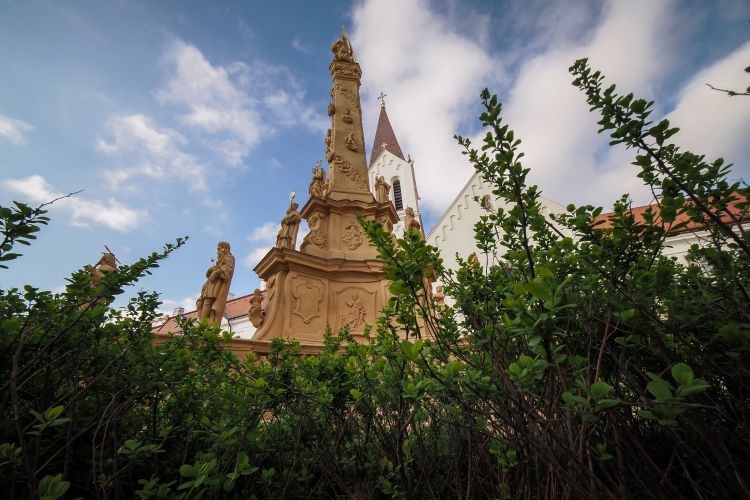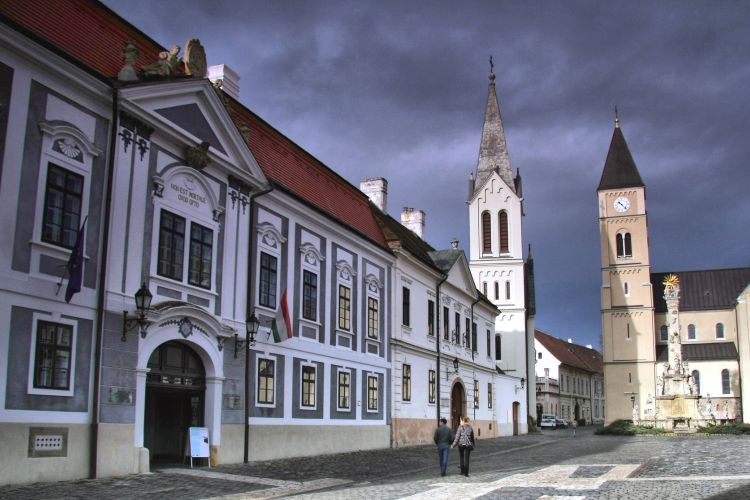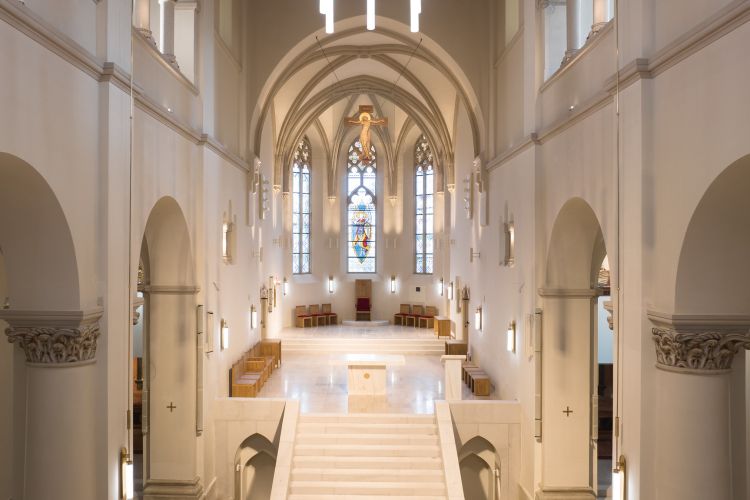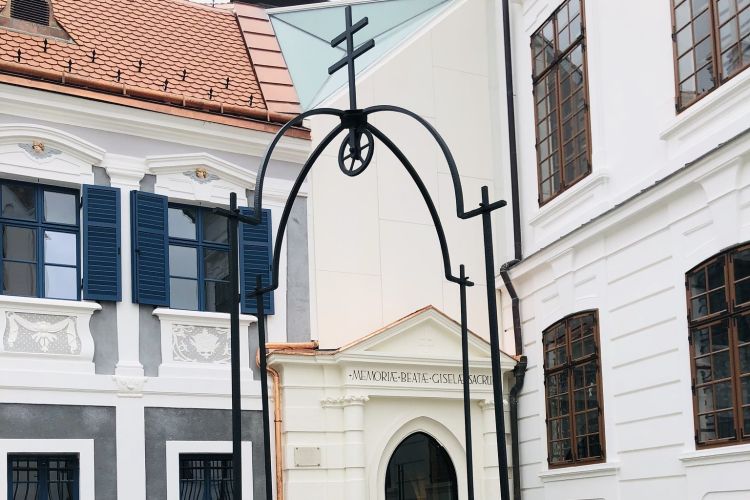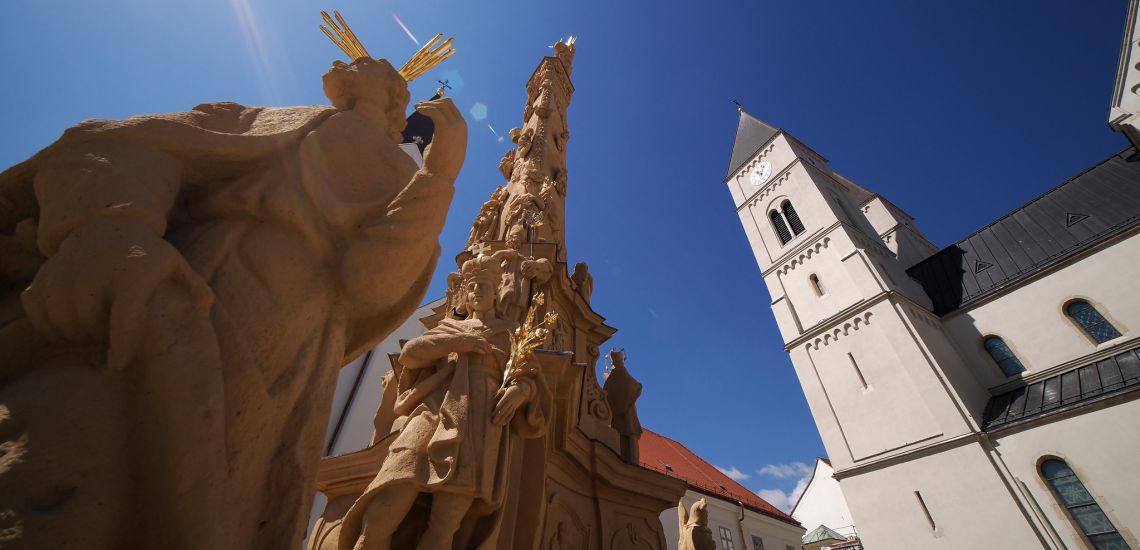
In addition to the still-standing Cathedral, St. Stephen's Church, Episcopal Palace and Biró-Giczey House, Szentháromság Square – one of the most scenic spots of the castle district – was filled with small cottages built along narrow streets until the mid-18th century. The old houses were demolished by Bishop Márton Biró Padányi to make room for the Holy Trinity statue, a distinctive monument of the Hungarian Baroque, which was modeled after the Holy Trinity statue in Pest.
Sculpted by Ferenc József Schmidt and Tamás Walch, the 15-metre-high composition was consecrated on Trinity Sunday in 1750.
Subsequently, the Castle’s main square also took on the name of the statue.
Holy Trinity statues are a familiar sight in the historical cities of Central Europe. Also known as plague statues, they were erected in gratitude to God after the devastating epidemics had receded. Since the statue in Veszprém was not directly preceded by a plague, it can be assumed that the driving force behind its creation was the cult of the Holy Trinity, which was favoured and supported by Bishop Padányi.
The construction of the 15-metre-high composition began in 1749, and even though it was consecrated on Trinity Sunday in 1750, the works continued until 1752. Several skilled artisans collaborated in its creation. The stonemasons were Ferenc József Schmidt and Tamás Walch, who was originally from Kismarton, but had been already living in Várpalota at the time. The painting was done by József Anteszner, and the metal parts by János Sulman, the bishop's locksmith.
Restorations were carried out in 1974 and in the period between 1990 and 1992. Research revealed a number of surprising facts, such as that the statues were rearranged during successive renovations in 1780 and in 1831. Originally, the three monumental statues might have been placed elsewhere, since in their current location on the building's volutes the larger figures cover the smaller ones behind them. It can be assumed that there were no statues on the lower volutes earlier, providing unobstructed views of the small puttos holding candlesticks. Instead, they might have been placed on the railing or even on separate pedestals. Even though the composition may have been improved several times, it is evident that its frontal plane has always been pointing towards the Archbishop’s Palace.
Source: Archiepiscopal Office of Tourism, Veszprém
The sculpture was erected on a concavely curved, two-level substructure, which is rounded by richly segmented cornices. A three-sided obelisk stands out from this plane, with rounded corners, tapering upwards. The carved capital of the obelisk is crowned by the group of the Holy Trinity sitting on a throne of clouds, decorated with a gilded red copper cross, a halo, a dove and a sceptre. The reliefs and the statues of the substructure depict saints, the coat of arms of Márton Padányi Biró and the chronogram attesting the foundation.
The monument is made of soft, malleable limestone mined in the nearby quarry in Bántapuszta. Over the past three centuries, the limestone became so worn out that, in spite of numerous restoration efforts, the original statues had to be replaced with copies. The weakness of the material is clearly shown by the fact that the statue required repainting and gilding as early as the end of the 18th century, and subsequent restorations were required in 1831-32 and again in 1857.
The Holy Trinity statue in Veszprém has many similarities with the one in Budapest, such as in the depiction of saints. The composition is surrounded by a stone railing with a wrought-iron gate. Similar to the statue in Pest, the parapet of the railing features smaller statues of Saint Sebastian, Saint Roch and Saint George.
